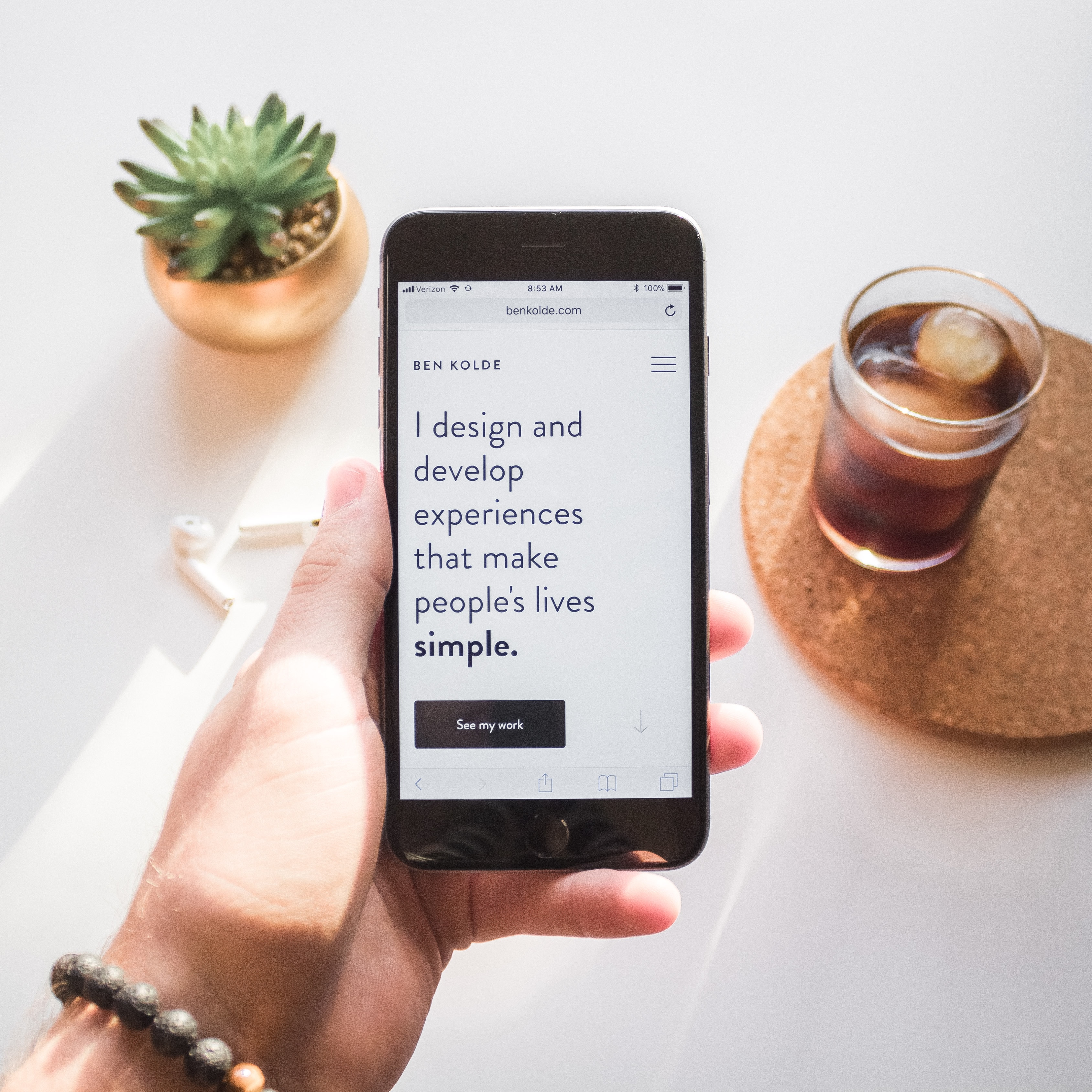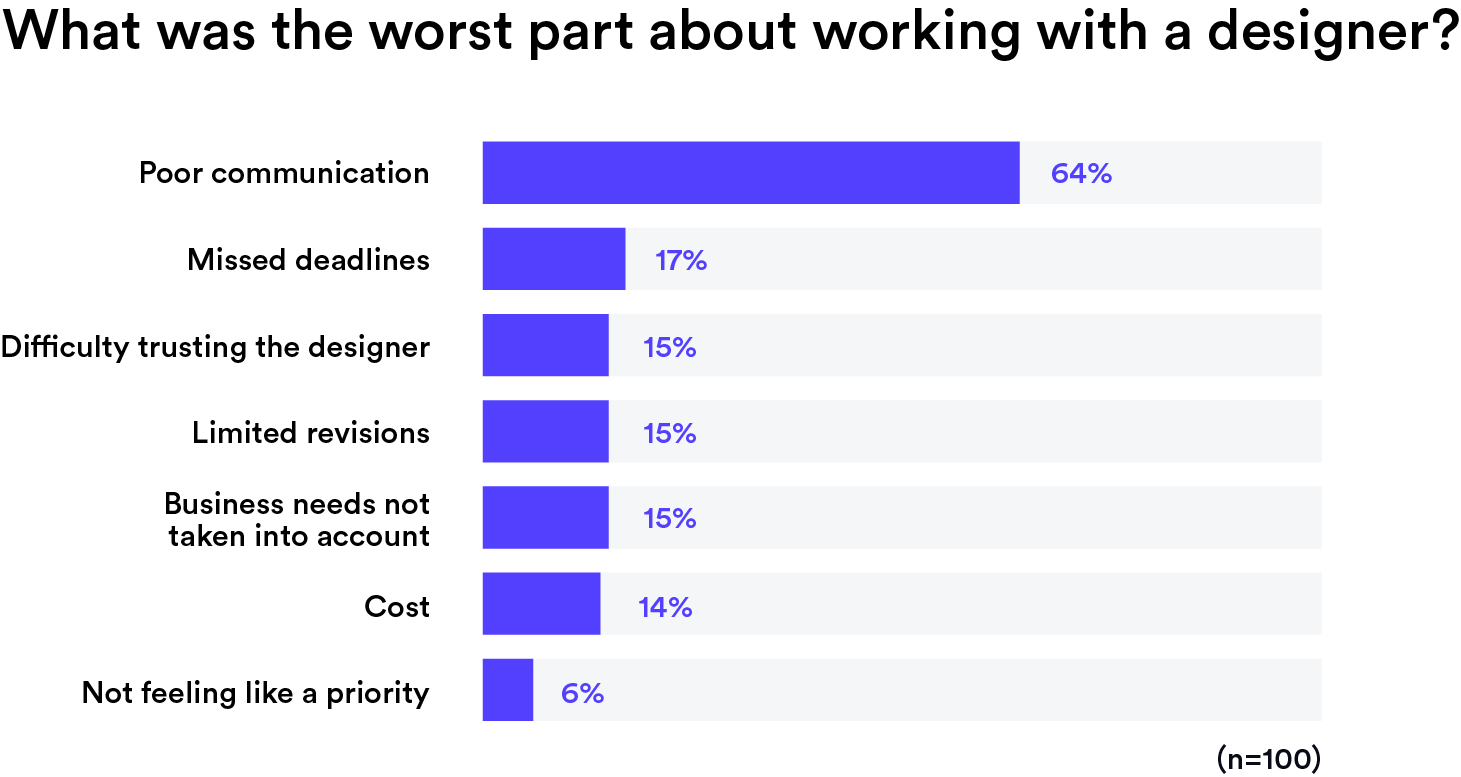September 30, 2019
 by Dawson Whitfield / September 30, 2019
by Dawson Whitfield / September 30, 2019

As a designer, you spend most of your time worrying about other people’s brands.
Whether you’re creating a dozen different display ads using the same company brand assets, sprucing up a company’s brand colors after a strategy pivot, or building a company's brand identity from scratch, you’re no stranger to branding.
However, just because you spend your days surrounded by brand elements, doesn’t mean your own brand is in fighting form.
Personal brands are vital for designers to help build business and show off their portfolios while maintaining true to their values and goals.
Throughout this article, we will discuss what a personal brand is, why designers need one, and how to build one for yourself.
First, let's define what a personal brand is.
A personal brand is a way for individuals to market themselves, showcasing their unique abilities, skills, experience, goals, and values in order to build their businesses.
In the digital age, everyone has an audience, which makes personal branding everyone’s business.
For designers, the business of personal branding is particularly important.
Whether you’re one of the 10 million people following Linkedin’s #personalbranding hashtag or you consider yourself immune to the barrage of articles about the subject, your personal brand can make all the difference in your design career.
Why?
Even with the influx of online marketplaces for hiring designers, network connections (referrals, family, and friends) are still the top way people find their designers.
Take a look at the results from a recent survey by Looka, the logo design app:

However, referrals and connections don’t happen from good work or good will alone.
Whether you’re looking to cut your teeth freelancing and need a way to grow your client base, working in a company and want to climb the ladder up to that coveted creative director position, or trying your hand at breaking into the agency world, building a personal brand can help people find, understand, and appreciate your design work.
As a designer, chances are that you’ve been through (or at least read through) the branding process a few times before and are familiar with everything that goes into it.
Now, it’s time to apply those steps to yourself.
Setting aside the time to work on your personal brand the same way you would when branding a client or company’s brand will provide the right foundation for a brand that works for you and your goals.
In short, the first step to building an effective personal brand is to treat your personal brand the same way you would any other project: seriously.
Let’s say you’re not a branding designer who has been doing this for years.
Let’s say you’ve been designing nothing but display ads for the same company for years or have only ever focused on generating flyers for a handful of clients. If you want to improve your flyer design skills, learning how to make a flyer using design best practices can help you create more impactful visuals.
If that’s the case, we’ll start at square one of building your personal brand: your vision, mission, and values.
Vision is your ‘what’.
Ask yourself, "What do I want my design to do for the world? Make it more accessible? More beautiful? More live-able?"
There’s your vision.
While having an all-encompassing design vision can be inspiring, for it to be impactful, you need to be a bit more practical.
Here’s where your mission comes in.
Your mission is the practical application of your vision—the how to your vision's what.
For design, this might include the tools and techniques you leverage or the overall approach you take toward collaboration.
Now that we have your what and how, let’s look at your design why.
Values are the why behind your work; they’re the core beliefs that direct which projects you accept and how you approach them.
If you believe in usability above all else, questioning design trends, or in the power of technology, these are the kind of values you should keep in mind.
By considering these three core principles, you’ll discover the basis of your personal brand as a designer — and maybe a little bit about yourself.
You’ll also be able to mind your vision, mission, and values to create a personal brand statement, which you can leverage for further brand messages to use on your website, social media posts, in interviews, in meetings, and at networking events — or anywhere else you might want to break out your personal brand.
While you might want to keep your options open and not close yourself to any opportunities or clients, most people prefer to partner with a designer with a particular area of expertise or experience — whether that’s in an industry or style of design.
From that same Looka survey, we can see that people rate experience or expertise as a key factor in deciding on their designer.

If you have years of experience designing for a particular industry or have mastered a few select styles, these are the areas you’ll want to emphasize in your personal brand.
Personal branding only works when it’s authentic, so think of this as an exercise in becoming more of what you already are.
What if the design work you’ve done doesn’t reflect the brand you want to build?
Start by seeking out freelance jobs in the industry, medium, or style that interests you to build out a portfolio that supports the niche you want to work in.
Like all careers, passion pays off in design; the more work you do in your niche, the more work you’ll find there.
Just because you found a niche you love doesn’t mean you’re the only one who’s operating there.
Personal branding is just as much about differentiating yourself from others as it is defining yourself.
Here’s where process comes into play.
When you look at what clients are willing to pay more for and what they value in a designer, it’s not just the quality or experience a designer brings to the table.


On the flip side, poor communication, not prioritizing building trust, making clients feel unimportant, and not taking business needs into account are some of the most common pitfalls of designers.

So, as you build out your personal brand, consider how you work with clients or companies differently.
The process — not just the outcome — can be a critical part of setting yourself apart as a designer.
Now, I know what you’re thinking; we’re a few hundred words into an article about personal branding for designers and we haven’t even talked about the visual aspects of your brand.
We’ll get to that part, but unless you do the groundwork of establishing (and, yes, writing out) what makes your brand as a designer different, you won’t be able to design the right materials to match.
Which brings us to our next step.
Now that we’ve figured out the story behind your brand as a designer, it’s time to get to the ‘branding design’ part of branding yourself as a designer.
This part should be second nature for you, as a designer.
However, if you need a quick refresher on the kind of brand assets you’ll need, here’s a rundown of what normally goes into building a brand identity.
While a personal logo might seem a bit much (you’re a person, not a company, after all), it has plenty of practical applications.
From your website, business cards, and freelance invoices, a logo can help quickly build brand recognition within your network.
If you’re apprehensive about accidentally veering into family crest territory, consider a monogram design logo. After all, it’s just initializing with more design flair.
While the work you design likely doesn’t all use the same color palette (it shouldn’t if you’re working with multiple companies), creating a cohesive experience on social media, your website, and physical branding materials works best when your color scheme is cohesive.
Even if your portfolio is an explosion of color, a unified color palette in the area around it will tie everything together — and back to you.
Whether digital or physical, the importance of great fonts isn’t something that needs to be explained to a designer.
In case you need a refresher, the right font should be distinct enough to distinguish you from other designers, while containing the right associations to support your personal brand.
Like your color palette, any shapes or imagery you use on your website will be competing with the varying designs of your portfolio.
While you’ll be able to use your design skills to create any imagery you want for things like social posts, you might want to keep things pared down on your website, allowing your portfolio to shine
Within your portfolio, make sure to select designs you’ve done in your niche.
Even if something looks cool, if you wouldn’t want to work on it again, nix it.
While the tone and voice of your personal brand will be closely tied to the way you speak and write in real life, that doesn’t mean you don’t need to edit any tweets or thought leadership pieces you might put out.
Remember, the whole point of a personal brand is to bring out your best qualities and position yourself the way you want to be seen.
So, be conscious of the way you come across in your writing and whether it reflects the impression you’re looking to create.
After spending all that time crafting messages from your mission, vision, values, and positioning, you’ll actually need to use them.
Don’t be afraid to really hammer things home here.
Even if you feel like you’ve said “modular design” a million times in meetings, chances are, your coworkers or clients only hear it about one out of every 10 times you mention it.
Now that you’ve gotten your brand identity together, let’s get out there and bring your personal brand to the world.
Depending on your goals as a designer, there are a few areas you’ll need to deploy your personal brand.
Regardless of your career goals as a designer, you’ll need to build a website to house your portfolio.
While we won’t need to remind you to use the visual aspects of your brand here, remember to keep your messages top of mind.
Leveraging your what, how, why, and process throughout your site’s messages will give visitors get an idea of what it’s like to work with you — on top of what your work looks like.
Becoming a thought leader in your industry (or even just your company) can’t happen if nobody knows your thoughts.
Sites like LinkedIn and Twitter let you throw your opinion in the ring for anything from rebrands in the news, to design trends popping up, to new design tools.
Putting your voice and work out there helps you to build a brand presence and authority online, gaining trust and growing your network.
If you’re actively seeking freelance work, you’ll need to create a profile on freelance sites — if you haven’t already.
While you obviously won’t be able to own the entirety of the design the same way you can for your personal website, the core messages you built out for your brand should also be leveraged here.
Make use of the bio and description sections to let people know who you are, what you do, and how you do it differently.
Focus on what sets you apart. If your bio sounds like everyone else’s, it’s harder for people to remember you as they scroll through the hundreds of other web designers available.
No matter how much effort you put into branding yourself as a designer, you’ll eventually outgrow your personal brand, and that’s okay.
Your personal brand won’t be static, because neither are you.
As you grow and change, your messages, materials, and mediums will too.
Be prepared to revisit this process about once a year to build a personal brand as dynamic as you are — and a design career to match.
Creating a personal brand is vital to expanding your career as a designer in today's market. Following the steps listed throughout this article will allow you to not only succeed as a designer, but let others know if your success, in turn, driving you more business.
Read reviews on website builders today to start building one major step in your personal brand as a designer!
Dawson Whitfield is the CEO and Co-Founder of Looka, an AI-powered logo maker and graphic design platform that provides business owners with a quick and affordable way to create a beautiful brand.
From your logo and color scheme to fonts, imagery, and layout, visual branding shapes a...
.png) by Devyani Mehta
by Devyani Mehta
When you’re clear on your purpose, your work gets clearer, too.
 by Sarah Brooks
by Sarah Brooks
It’s a simple rule of business: every brand needs a name.
 by Christine Glossop
by Christine Glossop
From your logo and color scheme to fonts, imagery, and layout, visual branding shapes a...
.png) by Devyani Mehta
by Devyani Mehta
When you’re clear on your purpose, your work gets clearer, too.
 by Sarah Brooks
by Sarah Brooks


